Growing fruits and vegetables in pots offers numerous benefits that appeal to a wide range of gardeners—from those with limited space, such as apartment dwellers and urbanites, to those who simply wish to enhance their patio or balcony. Container gardening allows you to control the environment your plants grow in, from the type of soil to the amount of water and sunlight they receive. It’s also an excellent way for beginners to dip their toes into gardening without committing to a large, in-ground garden.
10 Easy Fruits and Vegetables to Grow in Pots
Fruits and Vegetables to Grow in Pots method reduces the risk of soil-borne diseases and gives gardeners the advantage of mobility; pots can be moved to optimize sunlight exposure and to shield plants from harsh weather. Furthermore, growing in pots can be a decorative way to add color and vibrancy to small spaces, making it not only functional but also aesthetically pleasing. This guide explores ten easy-to-grow fruits and vegetables that thrive in containers, ensuring even those with minimal gardening space can enjoy fresh, home-grown produce.
Tomatoes
Tomatoes are a favorite for many home gardeners and adapt well to container gardening. When growing tomatoes in pots, choosing the right variety is crucial; smaller types like cherry or grape tomatoes and determinate varieties that grow to a fixed height are ideal. The pots should be at least 18 inches in diameter and deep enough to accommodate the plant’s root system, which is essential for healthy growth.
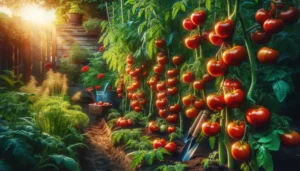
Tomatoes require at least six to eight hours of direct sunlight daily to develop fully. They need regular watering to keep the soil consistently moist but not soggy—uneven watering can lead to issues like blossom end rot. Feeding tomatoes with a balanced, slow-release fertilizer will support their rapid growth and fruit production. Regularly check for signs of pests or disease and take action promptly to mitigate any issues. Staking your tomato plants or using tomato cages can help support their weight as they grow, preventing branches from breaking and keeping fruit off the ground, which can contribute to a healthier and more bountiful harvest.
Peppers
Peppers, whether sweet or spicy, are highly productive plants when grown in pots and make a colorful addition to any patio or balcony garden. Like tomatoes, peppers thrive in warm conditions and require pots that are at least 12 inches in diameter. Using a well-draining potting mix is essential to prevent waterlogging, which can lead to root rot. Peppers should be placed in a spot that receives at least six hours of sunlight per day. Watering should be consistent to maintain moist soil, especially during the peak of summer.
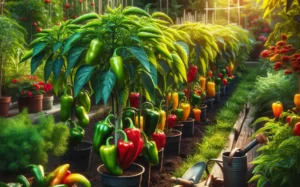
For best results, use a slow-release fertilizer rich in phosphorus and potassium to encourage strong root development and vibrant fruit production. As peppers grow, they may require staking to support the weight of their fruits. Regular harvesting when the peppers reach their full color—red, yellow, green, or purple—encourages the plant to produce more fruit throughout the growing season.
Lettuce
Lettuce is an excellent choice for container gardening due to its shallow root system, making it ideal for small, wide pots or window boxes. This leafy green prefers cooler temperatures and partial shade, which helps prevent it from bolting (going to seed prematurely) and keeps the leaves tender and sweet. Lettuce grows quickly and can be harvested just a few weeks after planting, providing almost instant gratification for the gardener.
Watering should be done in the morning to allow the leaves to dry before evening, reducing the risk of fungal diseases. Lettuce can be harvested leaf by leaf or by cutting the whole plant at the base—either method encourages multiple harvests from the same plant. Mixing different lettuce varieties in one pot not only maximizes yield but also creates an attractive display of colors and textures.
Strawberries
Strawberries are particularly well-suited to growing in pots, which can protect them from pests like slugs and give gardeners better control over the growing conditions. Opt for larger pots to allow room for runners and choose a sunny spot, as strawberries need at least six hours of direct sunlight each day. The soil should be rich, fertile, and well-draining to keep roots healthy and prevent waterlogging.
Water strawberries consistently, keeping the soil moist but not soggy, and feed them with a high-potassium fertilizer to boost fruit production. Regularly removing spent flowers and dead leaves can help maintain plant health and increase yield. Consider using a net to protect your strawberries from birds, and enjoy harvesting bright, juicy fruits throughout the summer months.
Carrots
Growing carrots in pots is straightforward and eliminates the common garden problem of rocky soil, which can lead to misshapen carrots. Choose deep pots—at least 12 inches deep—to accommodate the long roots of carrots. Use a sandy, well-draining potting mix to encourage good root development. Sow carrot seeds thinly to avoid the need for extensive thinning later on and cover lightly with soil, keeping the soil moist for successful germination.
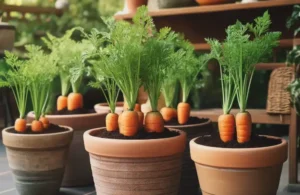
Carrots require consistent moisture, especially as the seeds are germinating and while the roots are forming. Once established, thin the seedlings to prevent overcrowding and allow each carrot to develop properly. Harvest carrots when their tops start to poke above the soil and they’ve reached the desired size. Growing carrots in pots can be particularly rewarding as pulling them from the soil reveals their true size and shape, often a delightful surprise for the gardener.
Radishes
Radishes are one of the quickest vegetables to grow, often ready to harvest just three to four weeks after sowing. They are ideal for pots due to their small size and fast-growing nature. Use shallow pots, at least six inches deep, as radishes do not have deep roots. Plant radish seeds directly into moist, fertile soil, spacing them about an inch apart. Radishes need plenty of sun, at least four to six hours daily, to develop their full flavor and crisp texture.
Keep the soil evenly moist but not waterlogged, as too much water can dilute their taste and lead to spongy textures. Radishes can be harvested as soon as they reach their mature size, typically when the roots are approximately one inch in diameter. Pulling them up regularly encourages continuous production, and their peppery flavor makes them a refreshing addition to salads and dishes.
Herbs (Basil, Mint, Cilantro)
Herbs are particularly well-suited to container gardening and can be grown on windowsills, balconies, or patios, where they are easily accessible for culinary use. Each herb has its own specific needs, but most prefer well-draining soil and at least six hours of sunlight per day. Basil, for example, needs warm conditions and regular watering, while mint prefers a bit more moisture and can even thrive in partial shade.
Cilantro grows best in cooler conditions and should be placed in a spot that receives morning sun and afternoon shade. Regular harvesting of herbs encourages new growth and prevents them from becoming woody. Additionally, potted herbs can be moved indoors in colder months, providing fresh flavors year-round. Growing a variety of herbs in pots not only offers convenience for cooking but also adds fragrance and beauty to your garden space.
Spinach
Spinach is an excellent vegetable for container gardening, thriving in cooler temperatures and capable of growing in partial shade, which makes it a versatile choice for different garden locations. Use wide, shallow pots and rich, well-draining soil to plant spinach. It prefers consistent moisture to ensure rapid leaf production, so water regularly, especially during dry spells.
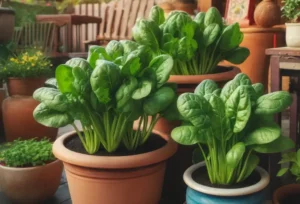
Spinach can be harvested at the “baby” stage for salads or allowed to mature for cooking uses. Frequent harvesting encourages the plants to produce more leaves, extending the season. Additionally, spinach is high in nutrients, making it a healthy and productive addition to your container garden. Its rapid growth from seed to harvest provides a quick reward, making it satisfying for gardeners looking to see quick results.
Potatoes
Potatoes can surprisingly be grown effectively in pots, making them an exciting project for container gardeners. Choose large containers, at least 24 inches deep, to allow ample room for the tubers to develop. Start with seed potatoes, planting them a few inches deep in a mixture of peat, compost, and well-draining soil. As the plants grow, continue to add soil to the pot, “hilling” the potatoes to cover the stems and encourage further tuber development.
Water consistently, as potatoes need a steady supply of moisture to grow large and healthy. Harvesting potatoes is like a treasure hunt, as you dig through the soil to find the tubers, which can be an exciting and rewarding experience. Growing potatoes in containers also allows you to control pests and diseases more effectively, ensuring a healthy crop.
Blueberries
Blueberries require acidic soil to thrive, which can be more easily managed in pots than in ground soil. Choose varieties that are suited to container life, typically dwarf or half-high types. Blueberries need pots at least 18 inches in diameter with drainage holes to prevent waterlogging. Plant in a mix specifically designed for acidic-loving plants or amend soil with sulfur to lower the pH. Blueberries require consistent moisture to produce well, so water regularly, keeping the soil slightly moist but not soggy.
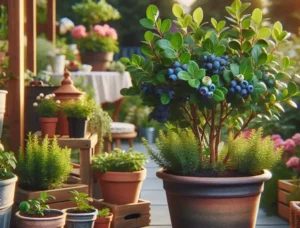
They also benefit from a high-acid fertilizer during the growing season to support their fruiting. Position your blueberry pots in a sunny location, receiving at least six hours of direct sunlight per day. Pruning annually in late winter encourages healthy growth and fruit production. Growing blueberries in pots not only makes managing soil conditions simpler but also protects the plants from certain ground-dwelling pests.
Summary
Container gardening is a versatile and accessible way to grow a variety of fruits and vegetables, even with limited space. Each plant chosen for this list is not only easy to grow but also provides valuable lessons in gardening—from soil management to pest control and everything in between. These plants can transform a small patio, deck, or balcony into a bountiful garden oasis. Whether you’re a seasoned gardener or just starting out, container gardening offers a unique and satisfying way to enjoy fresh, home-grown produce. Remember, the key to successful container gardening is understanding the specific needs of each plant and ensuring those needs are met through proper care and attention. Happy gardening!
FAQ
Q1: What size pot is best for growing tomatoes?
A: For tomatoes, a pot with a diameter of at least 18 inches and a similar depth is ideal to accommodate the deep roots and provide enough soil to retain moisture and nutrients.
Q2: Can I grow fruits and vegetables in pots indoors?
A: Yes, many fruits and vegetables can be grown indoors in pots as long as they receive sufficient sunlight or artificial light, proper watering, and are kept in suitable temperatures.
Q3: How often should I water my potted plants?
A: The frequency of watering depends on the type of plant, the size of the pot, and the environment. Generally, you should water when the top inch of soil feels dry. Ensure the pot has good drainage to prevent overwatering.
Q4: What are the best soil amendments for container gardening?
A: Organic matter such as compost or well-rotted manure is great for improving soil structure and fertility. Perlite or vermiculite can be added to improve drainage.
Q5: How do I deal with pests in my potted garden?
A: Regularly inspect plants for signs of pests. Use organic methods like neem oil, insecticidal soaps, or physical barriers such as netting or row covers to control pests without harming beneficial insects.
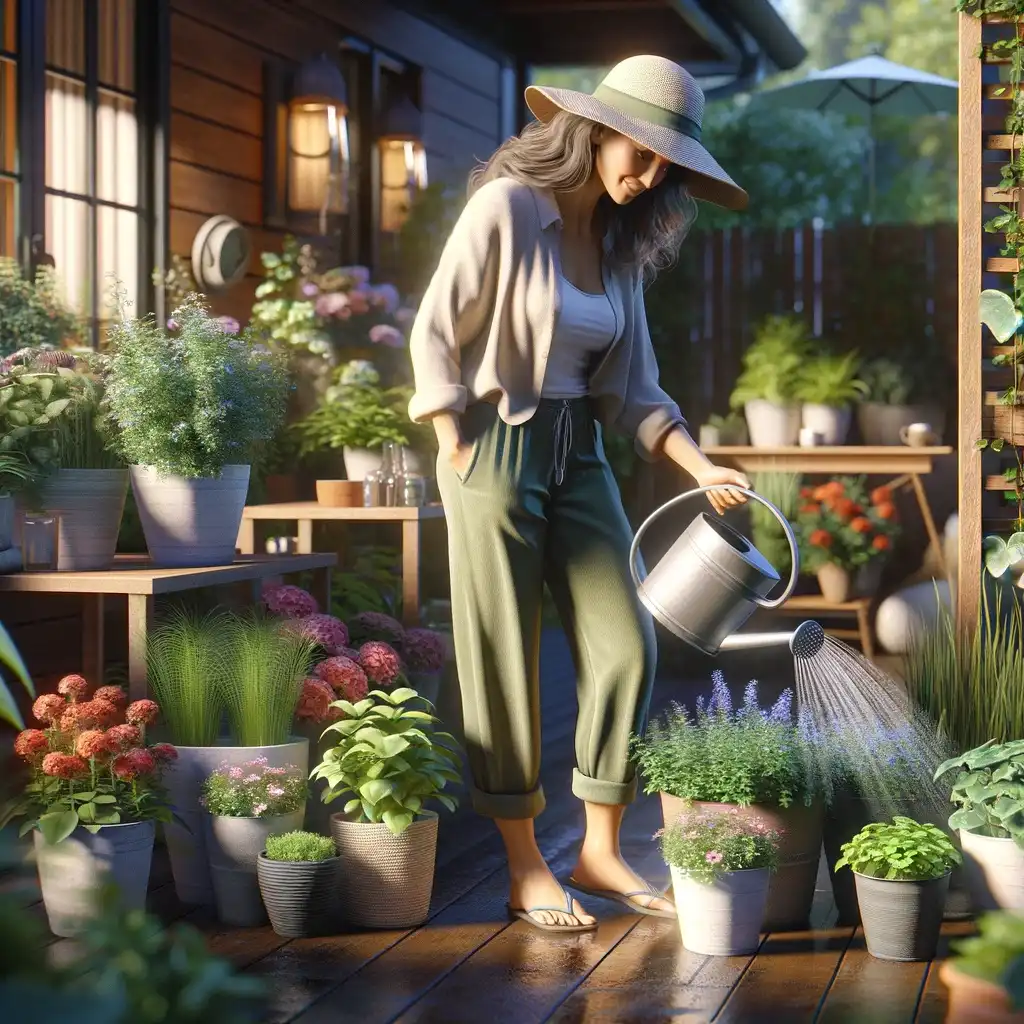
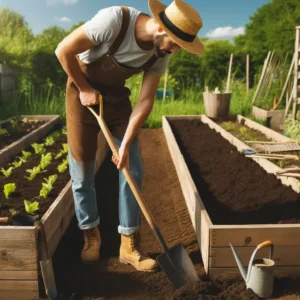
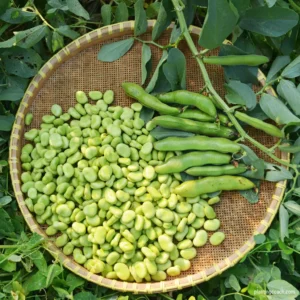
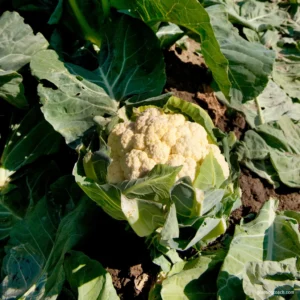
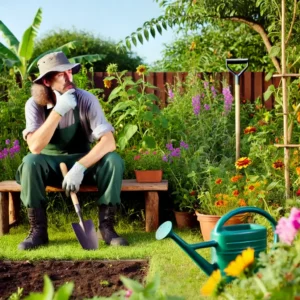

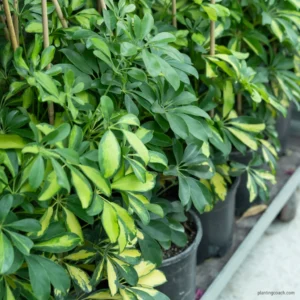
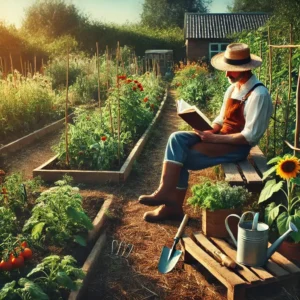
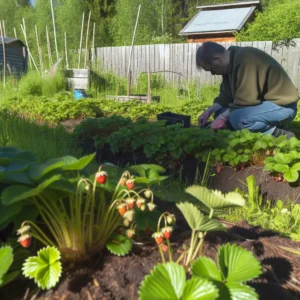
3 thoughts on “10 Easy Fruits and Vegetables to Grow in Pots”